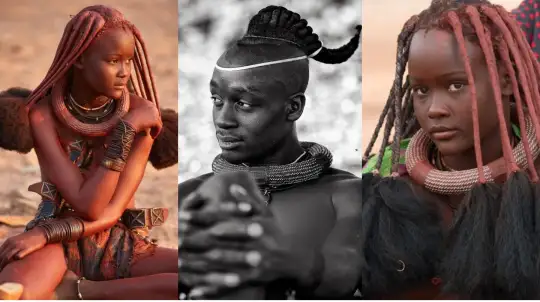UNREAL! Meet The African Tribe That Offers S3x To Guests On Visits

The Himba tribe's fascinating and distinct people inspired the character 'Binti' in Nnedi Okorafor's novella trilogy 'Binti.'
The semi-nomadic Ovahimba and Ovazimba tribes live in the Kunene and Omusati areas of Northern Namibia.
It is common for the women to engage in daily duties like milking cows and caring for children while the males go hunting, often for extended periods of time.
The Himba, who have a population of about 50,000 people, are polygamous people in which Himba females are married off to male partners chosen by their fathers once they reach puberty.
Despite western influence and agitation, most of their cultures have been preserved.
The "Man comes first" custom is one of them. The woman has little or no say in the decision-making process. First and foremost, she must submit to her husband's requests.
The Guardian reports that "When a visitor knocks, a man expresses his approbation and joy at seeing him by giving him the Okujepisa Omukazendu treatment, which entails offering his wife to his visitor to spend the night while the husband sleeps in another room. In the event that no lodging is available, her spouse will sleep outside."
This, it appears, minimises envy and strengthens relationships.
The "bathing is banned" guideline is another time-honoured custom.

Instead of bathing, the ladies take a smoke bath and apply fragrant resins to their skin. They are also influenced by the concept that the colour red represents "Earth and blood." Their crimson complexion is one of the features that distinguish them. The red colour comes from otjize paste (a mixture of butterfat, omuzumba scrub, and ochre), and its purpose is to protect their skin from the harsh desert heat and bug bites.
Influence Of The Himba On African Literature
The Himba people have not been well depicted in literature. The principal character 'Binti' in Nnedi Okorafor Binti, on the other hand, is of the Himba people.
Okorafor defines the tribe as a "Namibian group that uses sweet-smelling otjize,' a combination of ochre and butterfat, over their skin and rolls it into their hair as protection against the desert sun." The Himba in the novella does not travel, which contrasts sharply with the true Himba people, who are nomadic.
TIMELINE

Comments
Post a Comment